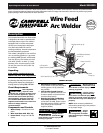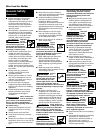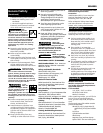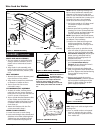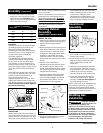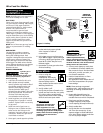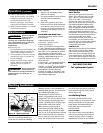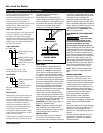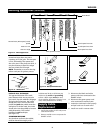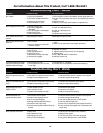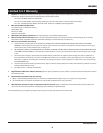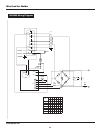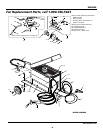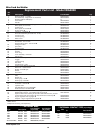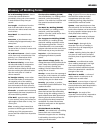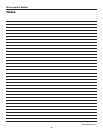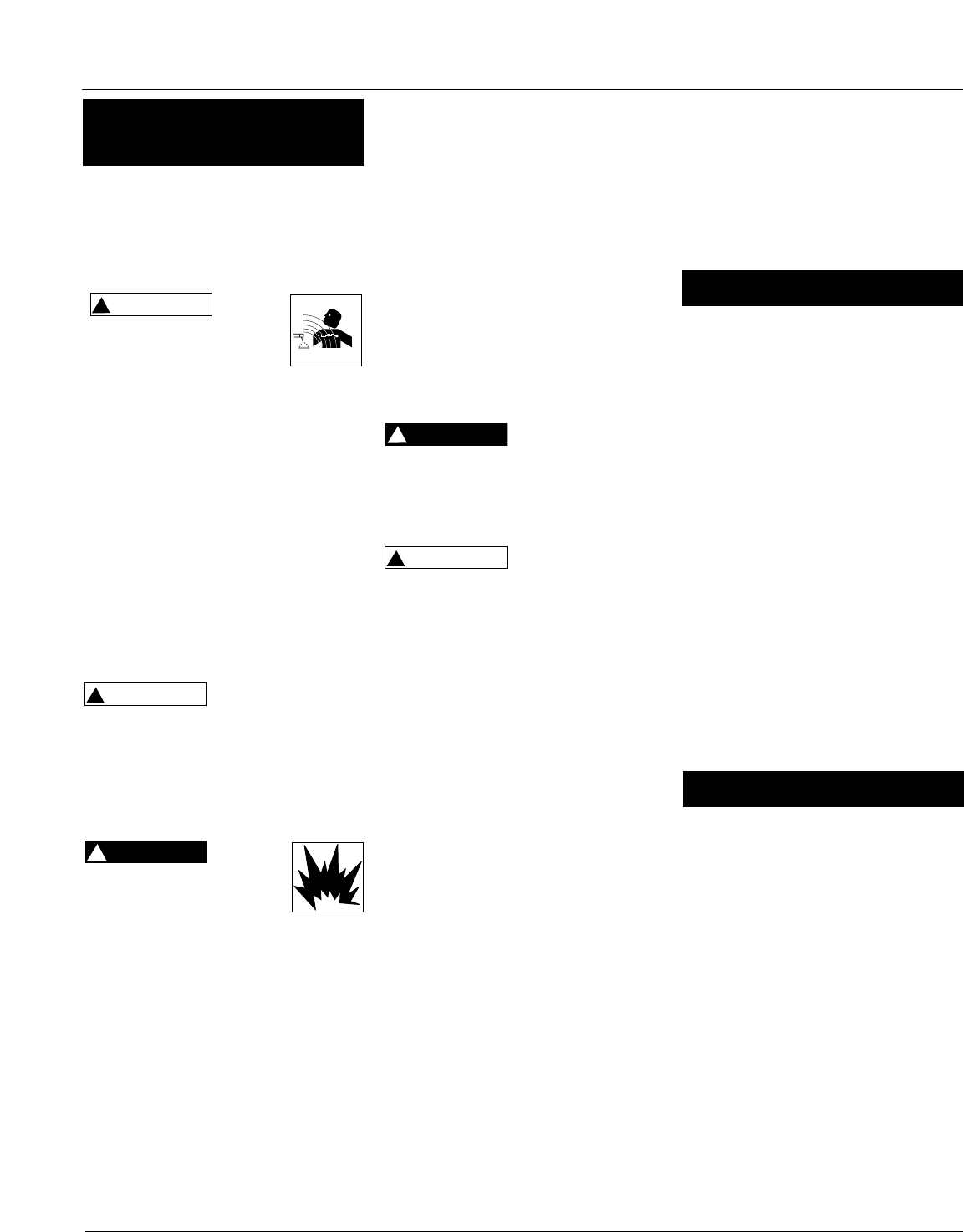
Safe Practices For Occupational And
Educational Eye And Face
Protection
ANSI Standard Z87.1, from American
National Standards Institute, 1430
Broadway, New York, NY 10018
Refer to Material Safety Data Sheets
and manufacturer’s instructions for
metals, wire, coatings and cleaners.
Selecting the proper location can
significantly increase performance,
reliability and life of arc welder.
● For best results place welder in an
environment that is clean and dry.
Dust and dirt in the welder retain
moisture and increase wear of
moving parts.
● Place welder in an area that
provides at least 12” (30,48 cm) of
ventilation space at both front and
rear of unit. Keep all obstructions
away from this ventilation space.
● Store wire in a clean, dry location
with low humidity to preserve wire
coating.
● The receptacle used for welder must
be properly grounded and welder
must be the only load on power
supply circuit.
● The use of an extension cord is not
recommended for electric arc
welding machines. The voltage drop
in extension cord may significantly
degrade performance of welder.
Model WG4000
Welder components listed below
are in the wire feed compartment.
Open and remove.
Tools needed:
1/4”, 9/32”, 5/16” nut driver
#2 Phillips head driver
Mallet or hammer
After unpacking welder, you will find a
box at front surrounding attached
torch, ground clamp lead, and power
cord.
The box at the rear of the welder contains
parts to be assembled:
Wheels (2), axle (1), plastic hubs (2),
axle bolts (2), nuts (2) and washers
(2)
Front foot
Cylinder bracket and chain
Work clamp
Regulator, hose, and hose clamps
Spool of .035” flux core welding wire
a. Remove coating from base metal.
b. Make sure welding area is well
ventilated.
c. Use an air-supplied respirator.
Extremely toxic fumes are created
when these metals are heated.
The
electro-
magnetic field that is gener-
ated during arc welding may
interfere with the operation
of various electrical and electronic
devices such as cardiac pacemakers.
Persons using such devices should
consult with their physician prior to
performing any electric arc welding
operations.
● Route the wire feed gun and work
cables together and secure with
tape when possible.
● Never wrap arc welder cables
around body.
● Always position wire feed gun and
work leads so that they are on same
side of body.
● Exposure to electromagnetic fields
during welding may have other
health effects which are not known.
Always be sure
that the welding
area is secure and free of hazards
(sparks, flames, glowing metal or slag)
prior to leaving. Be sure that equip-
ment is turned off and excess wire is
cut off. Be sure that cables are loosely
coiled and out of the way. Be sure that
all metal and slag has cooled.
Cylin-
ders can
explode if damaged. Shield-
ing gas cylinders contain gas
under high pressure. If
damaged, a cylinder can explode. Since
gas cylinders are normally part of the
welding process, be sure to treat them
carefully.
● Protect compressed gas cylinders
from excessive heat, mechanical
shocks, and electric arcs.
● Install and secure cylinders in an
upright position by chaining them
to stationary support or equipment
cylinder rack to prevent them from
falling or tipping.
● Keep cylinders away from any
welding or other electrical circuits.
!
DANGER
!
WARNING
3
WG4000
● Never allow a welding electrode to
touch any cylinder.
● Use only correct shielding gas
cylinders, regulators, hoses, and
fittings designed for the specific
application; keep them and
associated parts in good condition.
● Turn face away from valve outlet
when opening cylinder valve.
● Keep protective cap in place over
valve except when cylinder is in use
or connected for use.
● Read and follow instructions on
compressed gas cylinders, associated
equipment, and CGA (Compressed
Gas Association) publication P-1
listed in Safety Standards.
Never use
flammable gases
with MIG welders. Only inert or non-
flammable gasses such as carbon
dioxide, argon, helium, or mixtures of
one or more of these gasses are
suitable for MIG welding.
Never lift cylinders
off the ground by
their valves, caps, or with chains or slings.
ADDITIONAL SAFETY STANDARDS
ANSI Standard Z49.1 from American
Welding Society, 550 N.W. LeJune Rd.
Miami, FL 33126
Safety and Health Standards
OSHA 29 CFR 1910, from
Superintendent of Documents, U.S.
Government Printing Office,
Washington, D.C. 20402
National Electrical Code
NFPA Standard 70, from National Fire
Protection Association, Batterymarch
Park, Quincy, MA 02269
Safe Handling of Compressed Gases
in Cylinders
CGA Pamphlet P-1, from Compressed Gas
Association, 1235 Jefferson Davis
Highway, Suite 501, Arlington, VA 22202
Code for Safety in Welding and
Cutting
CSA Standard W117.2, from Canadian
Standards Association, Standards Sales,
178 Rexdale Boulevard, Rexdale,
Ontario, Canada M9W 1R3
Cutting And Welding Processes
NFPA Standard 51B, from National Fire
Protection Association, Batterymarch
Park, Quicy, MA 02269
!
WARNING
!
DANGER
General Safety
(Continued)
Installation
Assembly
www.chpower.com
!
WARNING



